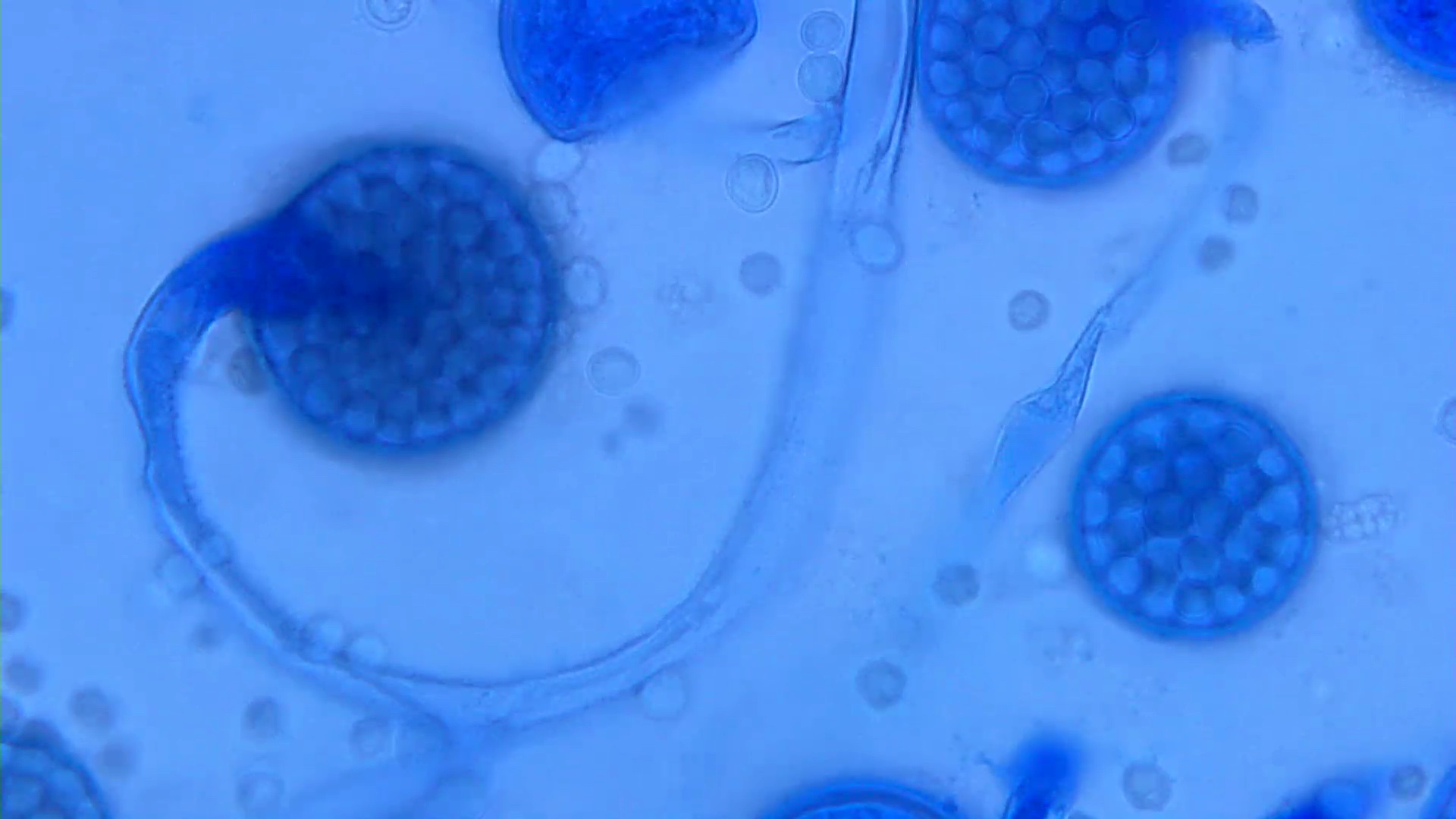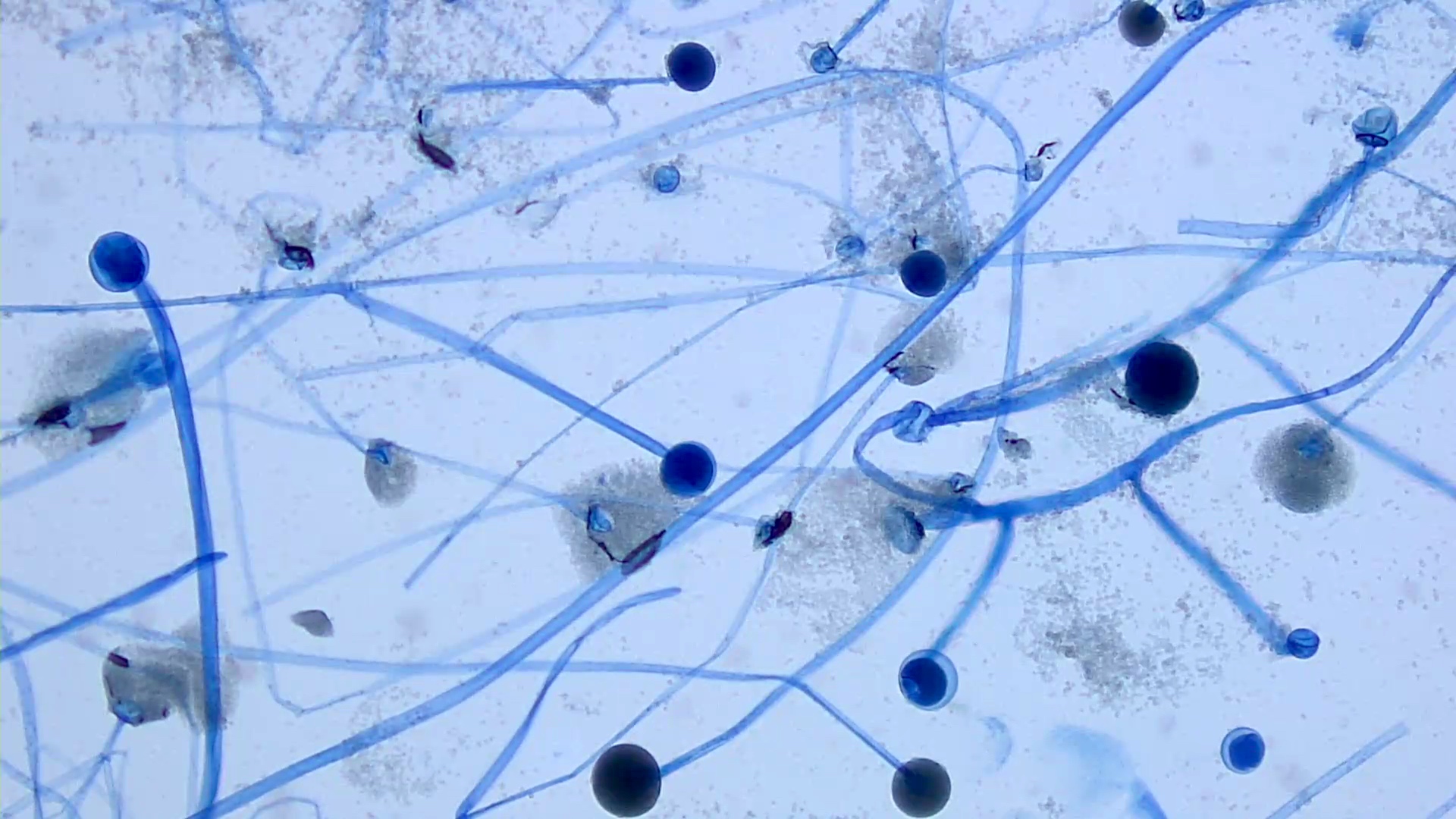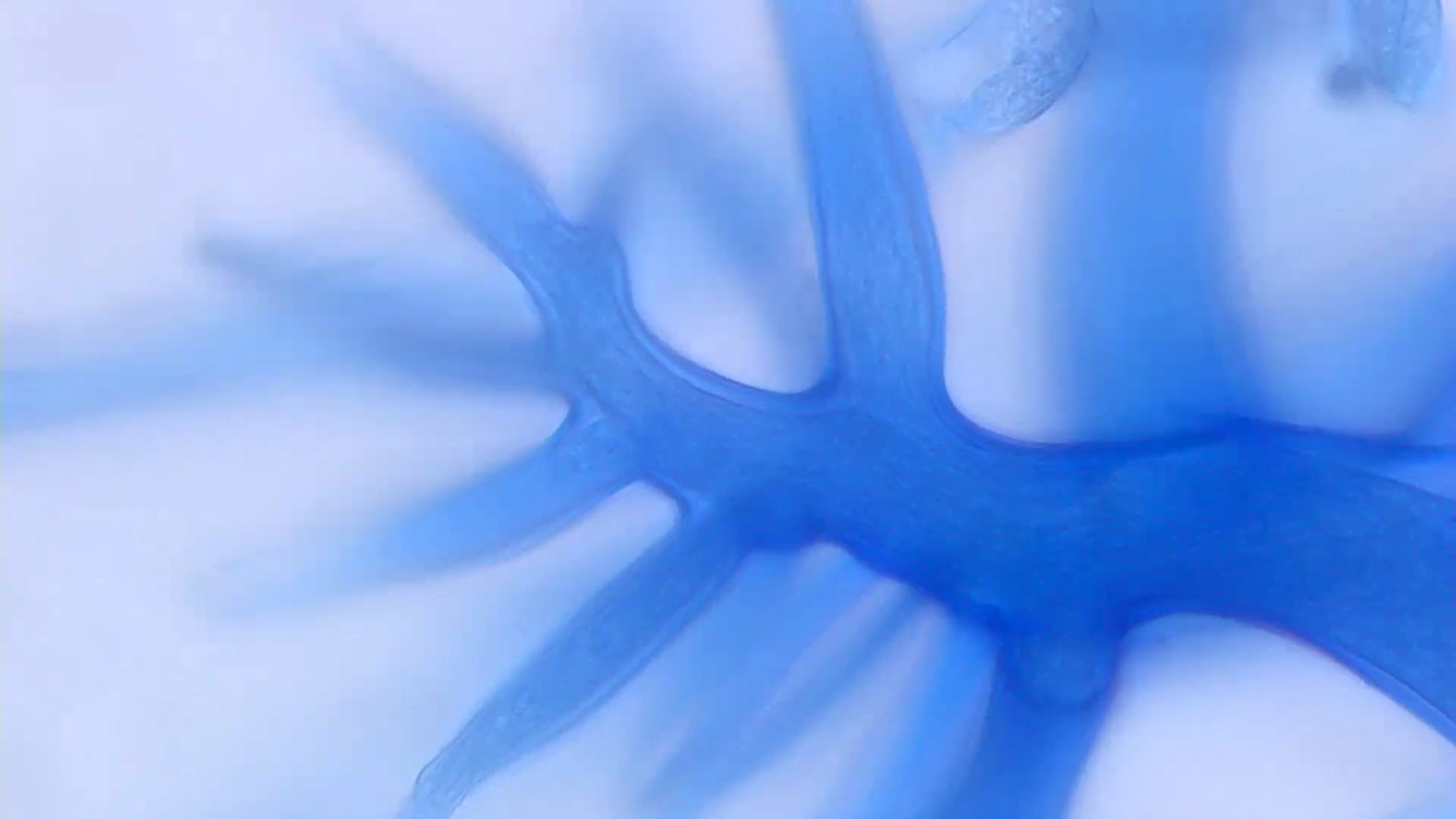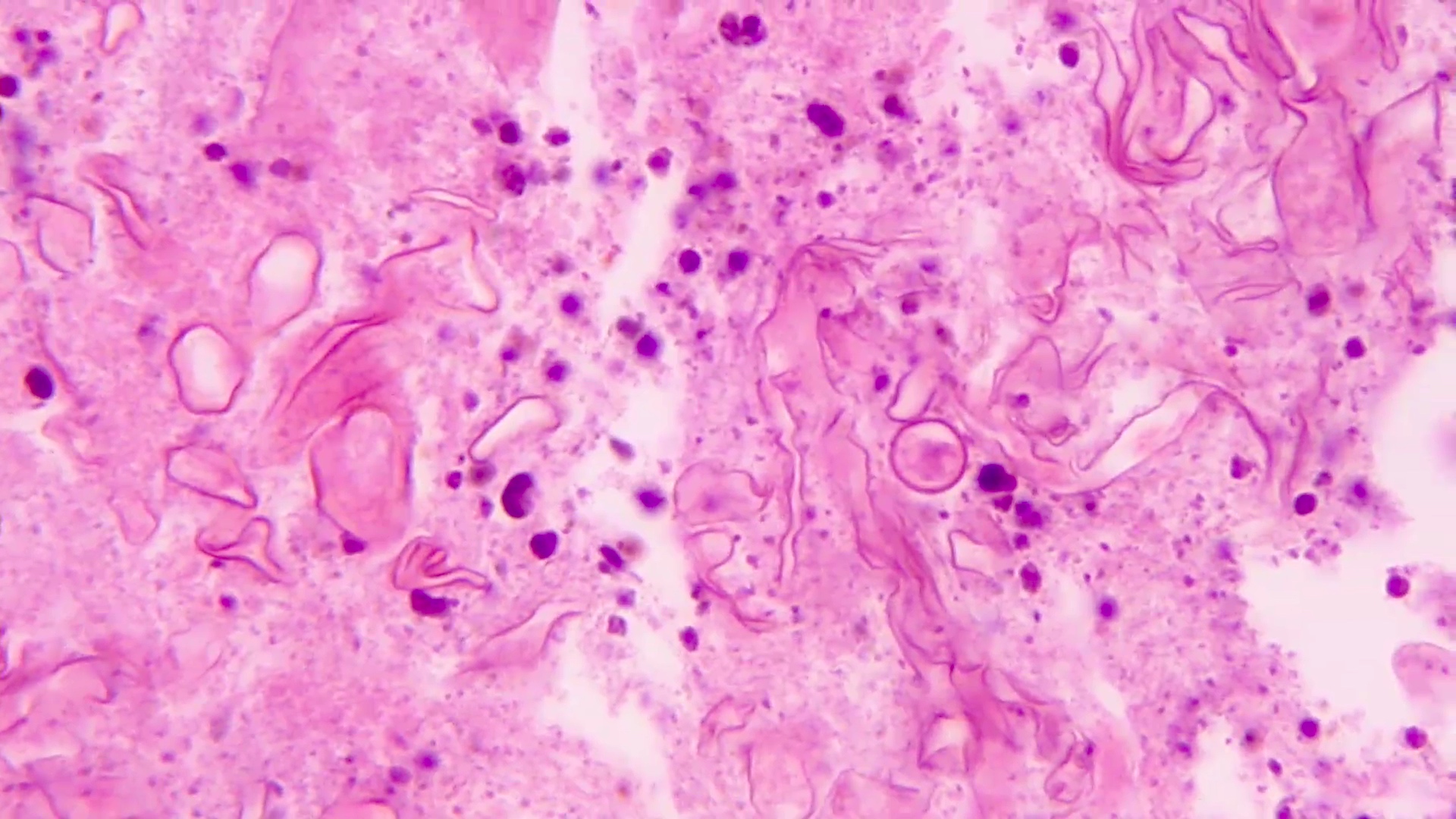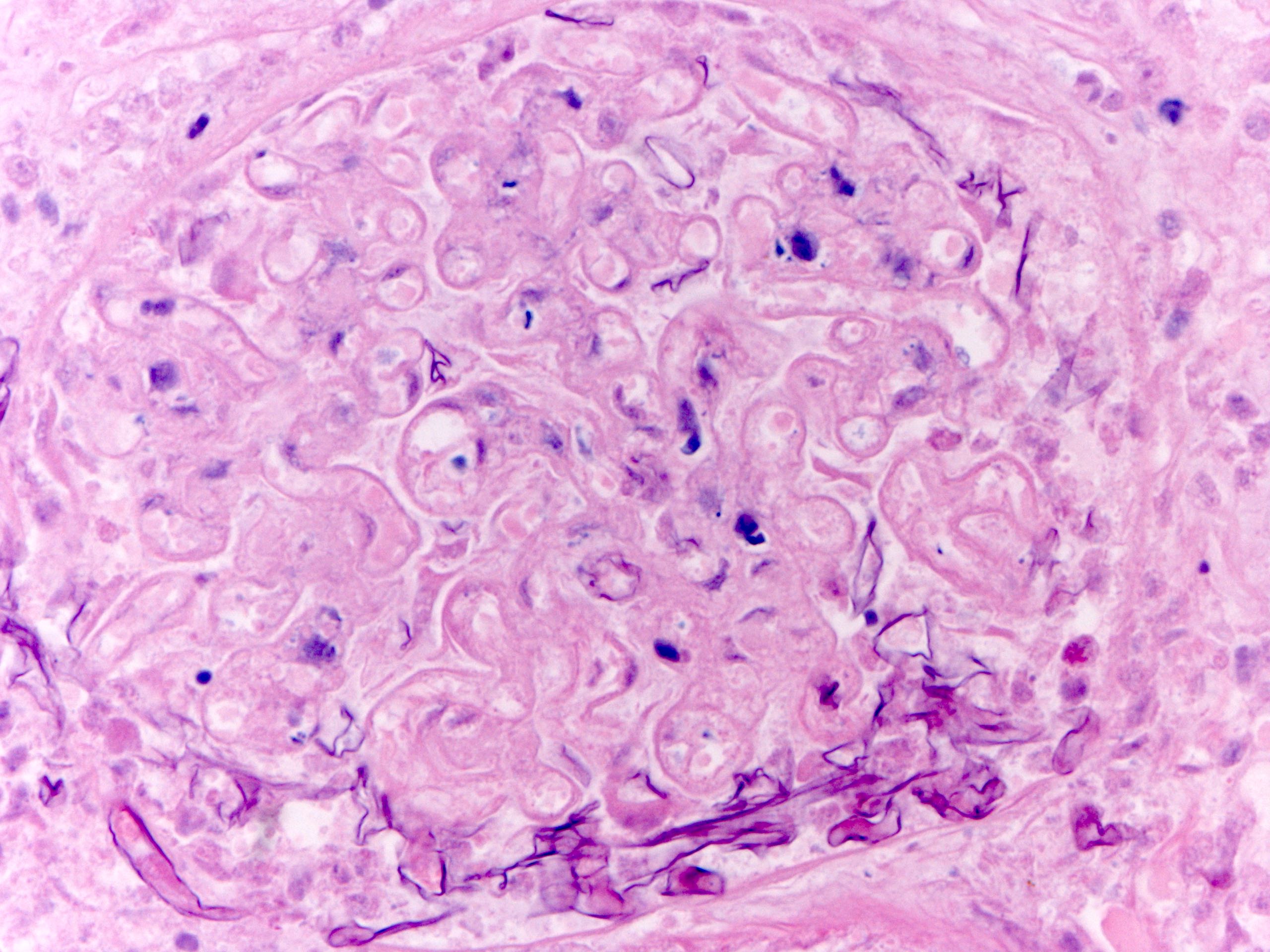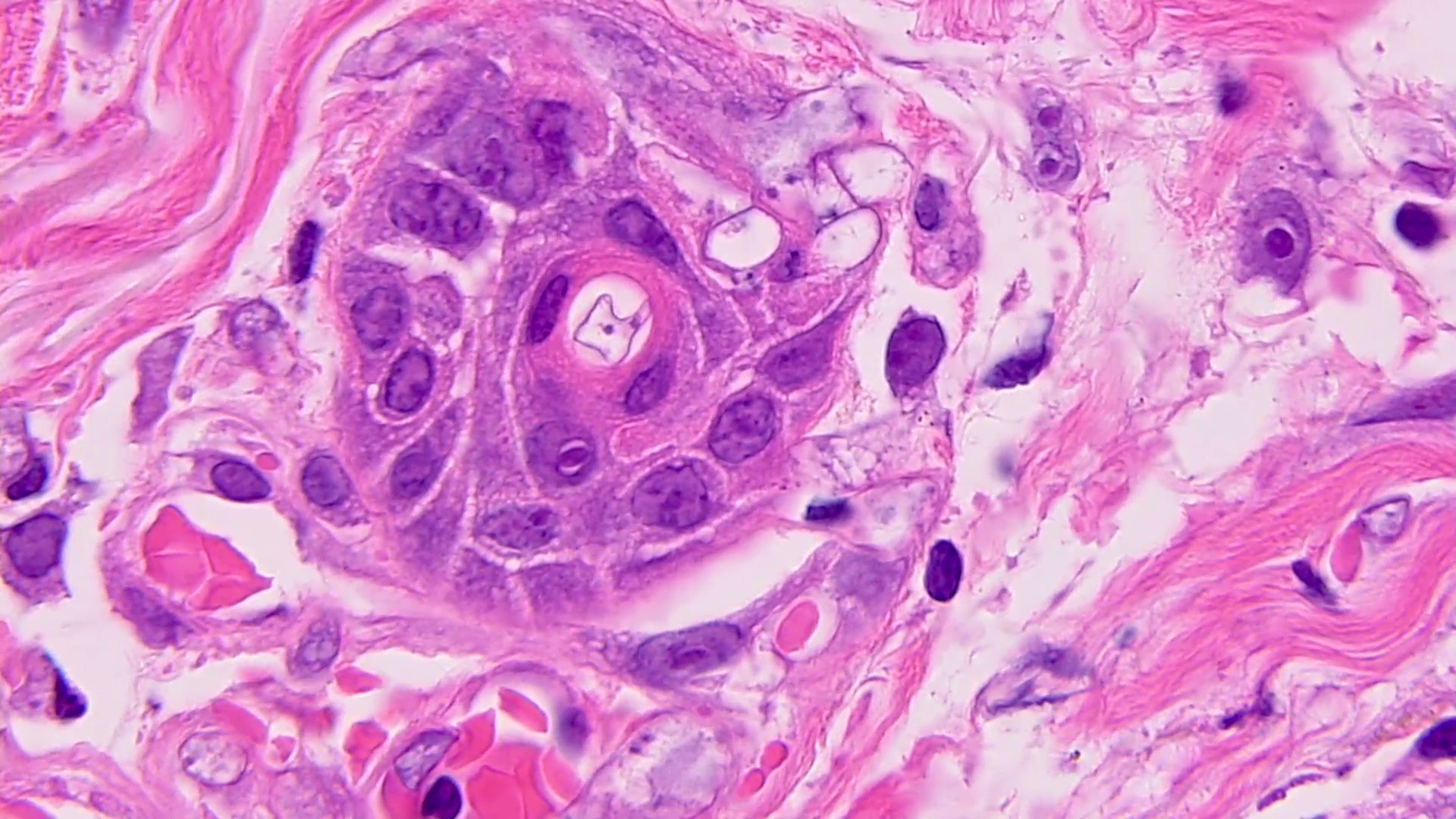Table of Contents
Definition / general | Essential features | Epidemiology | Sites | Pathophysiology | Clinical features | Diagnosis | Laboratory | Case reports | Treatment | Microscopic (histologic) description | Microscopic (histologic) images | Molecular / cytogenetics description | Differential diagnosis | Additional references | Practice question #1 | Practice answer #1 | Practice question #2 | Practice answer #2Cite this page: Burkett A, Saitornuang S, Leal SM. Zygomycetes. PathologyOutlines.com website. https://www.pathologyoutlines.com/topic/microbiologyzygomycetes.html. Accessed October 2nd, 2025.
Definition / general
- Rapidly growing molds
- Few septations (pauciseptate)
- Rapidly progressive angioinvasive disease
- Increased risk in poorly controlled diabetes and immune suppression
- Lid lifters in culture
Essential features
- Mucoromycota (UpToDate: Mucormycosis (Zygomycosis) [Accessed 9 March 2021])
- Most common human infections:
- Rhizopus (most common rhino-orbital cerebral mucormycosis R. oryzae)
- Mucor
- Rhizomucor
- Less commonly implicated:
- Cunninghamella
- Absidia (Lichtheimia)
- Saksenaea
- Apophysomyces
- Organisms present in soil or decaying plant and animal matter
- Spore inhalation or direct inoculation
Epidemiology
- Worldwide geographic distribution
Sites
- Sinonasal
- CNS / rhinocerebral
- Orbital
- Pulmonary
- Systemic
- Cutaneous
- Gastrointestinal
- Reference: UpToDate: Mucormycosis (Zygomycosis) [Accessed 9 March 2021]
Pathophysiology
- Rapid growth rates in the setting of neutropenia and diabetic ketoacidosis
- Acidity increases iron and hyperglycemia promotes organism growth
- Angioinvasion is common, resulting in thrombus formation and tissue necrosis
- Dead tissue nidus promotes additional growth
- Reference: Clin Microbiol Rev 2005;18:556
Clinical features
- Most often affects immunocompromised patients and uncontrolled diabetics
- Rapidly progressive medical emergency
- Surgical debridement is essential
- Reference: Lancet Infect Dis 2019;19:e405
Diagnosis
- Direct examination in tissue
- Rapidly growing molds with aerial hyphae in culture (lid lifters)
- Tape prep required for genus level identification
- PCR available but not currently FDA approved
Laboratory
- Pauciseptate, broad ribbon-like hyphae on direct exam
- Fragile hyphae - highly susceptible to cell death if tissue is ground prior to plating; fine mincing increases yield
- Rapid and diffuse growth in culture within 48 hours
- Nicknamed lid lifters, as aerial hyphae will lift the lid off of agar plates if not appropriately sealed
- Rhizoids key in identification of organisms
- Mucor genus: no rhizoids
- Rhizopus genus: nodal rhizoids
- Rhizomucor and Absidia / Lichtheimia: intermodal rhizoids
- Expect beta glucan and Aspergillus galactomannan tests to be negative
- Reference: Clin Microbiol Rev 2005;18:556
Case reports
- 50 year old woman with history of uncontrolled diabetes and recent dental extraction with right sided facial pain and swelling (Contemp Clin Dent 2017;8:662)
- 51 year old woman with autosomal dominant polycystic disease status post renal transplant presents with facial pain and edema, and diagnosed with mucormycosis in the maxillary sinus (Transplant Proc 2019;51:2498)
- 56 year old man with relapsing acute myeloid leukemia status postchemotherapy with new onset hypochondrium pain in the setting of aplasia, requiring aggressive surgical resection of mucormycosis from the thoracoabdominal wall (Ann Thorac Surg 2018;106:e239)
- 65 year old man with type 2 diabetes mellitus who presents with frontal / parietal headache and drainage from his left eye and nose (J Res Med Sci 2014;19:72)
Treatment
- Key point: resistant to voriconazole (effective antifungal for invasive aspergillosis)
- Surgical debridement and IV amphotericin B (lipid formulation) is standard therapy
- Posaconazole or isavuconazole have been used successfully as step down therapy and salvage therapy if the patient does not respond to amphotericin B
- Eliminate any predisposing factors, such as iron overload, immunosuppressive drugs, hyperglycemia and metabolic acidosis
- Reference: Clin Microbiol Rev 2005;18:556
Microscopic (histologic) description
- Broad pauciseptate ribbon-like hyphae (5 - 15 microns in diameter)
- Irregular branching in tissue; 90° angles
- Pauciseptate
- Reference: Clin Microbiol Rev 2005;18:556
Microscopic (histologic) images
Molecular / cytogenetics description
- Nuclear ribosomal ITS (internal transcribed spacer) / 28S ribosomal RNA sequencing
Differential diagnosis
- Other invasive mold infections, particularly aspergillosis
- Aspergillus (UpToDate: Epidemiology and Clinical Manifestations of Invasive Aspergillosis [Accessed 9 March 2021]):
- Has thinner septa with regular branching at acute angles (45° rather than 90°)
- 1,3 β-D glucan assay and serum galactomannan will be positive, unlike in Mucor species
- Like Mucor, Aspergillus infections occur in patients with hematological malignancies; however, it is more common in patients with severe neutropenia
- More likely than mucormycosis to localize to the lungs and less likely to involve multiple organs or paranasal sinus (Med Mycol 2019;57:S138)
Additional references
Practice question #1
A 25 year old woman with a history of type 1 diabetes presents to the emergency room with several days of an upper toothache and right sided facial pain and swelling. On physical exam, she is stuporous, with periorbital edema and blackish discoloration of her lower right face. Imaging showed opacification and erosion of the nasal septum and smears of nasal discharge revealed broad pauciseptate hyphae; however, serum 1,3 β-D glucan assay and Aspergillus galactomannan were negative. What is the most likely etiologic agent?
- Aspergillus fumigatus
- Candida albicans
- Fusarium solani
- Rhizopus oryzae
Practice answer #1
D. Rhizopus oryzae. Unlike other pathogens listed, zygomycetes produce very low levels of β-D glucan and do not cross react with the Aspergillus galactomannan assay.
Comment Here
Reference: Zygomycetes
Comment Here
Reference: Zygomycetes
Practice question #2
A 59 year old man with sickle cell disease is admitted for fever and altered mental status. Review of his medical records reveals an extensive list of home medications, including insulin, metoprolol and deferoxamine. Imaging reveals ill defined hypointense soft tissue in the orbit and soft tissue opacification in the maxillary sinus; biopsy reveals abundant broad pauciseptate ribbon-like hyphae but culture fails to yield an organism. What is the most likely reason an organism was not detected in culture?
- False positive direct exam due to an environmental mold growing in stain solutions
- Grinding of tissue prior to inoculation of agar media
- Use of voriconazole prior to sample acquisition
- Zygomyetes grow slowly and require an incubation time of 4 weeks
Practice answer #2
B. Grinding of tissue prior to inoculation of agar media. Zygomycetes grow rapidly, are more commonly true pathogens, not contaminants and exhibit resistance to voriconazole. Given few septations to keep cells intact, zygomycetes are highly susceptible if tissue is ground, not minced.
Comment Here
Reference: Zygomycetes
Comment Here
Reference: Zygomycetes





